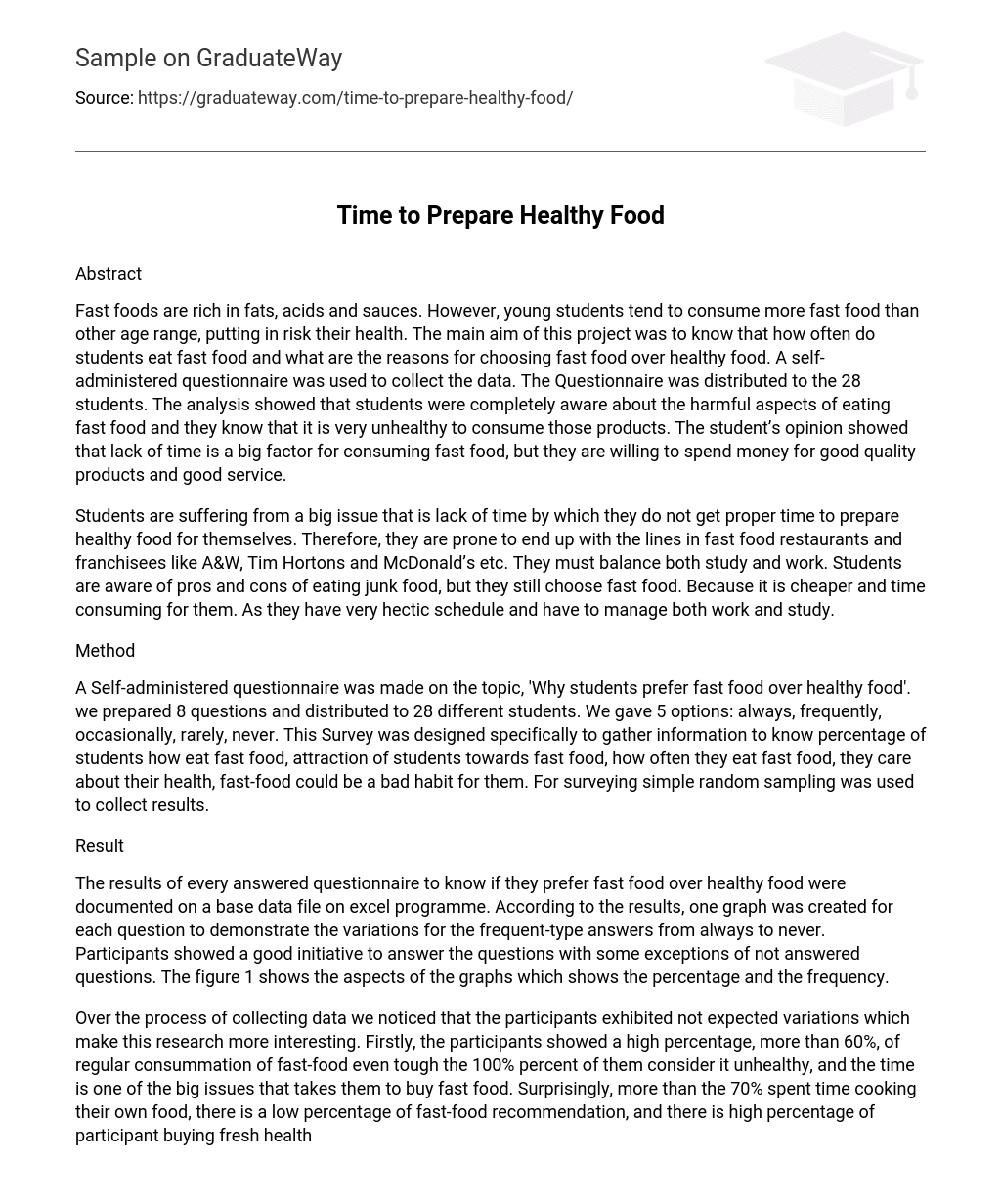Abstract
Fast foods are rich in fats, acids and sauces. However, young students tend to consume more fast food than other age range, putting in risk their health. The main aim of this project was to know that how often do students eat fast food and what are the reasons for choosing fast food over healthy food. A self-administered questionnaire was used to collect the data. The Questionnaire was distributed to the 28 students. The analysis showed that students were completely aware about the harmful aspects of eating fast food and they know that it is very unhealthy to consume those products. The student’s opinion showed that lack of time is a big factor for consuming fast food, but they are willing to spend money for good quality products and good service.
Students are suffering from a big issue that is lack of time by which they do not get proper time to prepare healthy food for themselves. Therefore, they are prone to end up with the lines in fast food restaurants and franchisees like A&W, Tim Hortons and McDonald’s etc. They must balance both study and work. Students are aware of pros and cons of eating junk food, but they still choose fast food. Because it is cheaper and time consuming for them. As they have very hectic schedule and have to manage both work and study.
Method
A Self-administered questionnaire was made on the topic, ‘Why students prefer fast food over healthy food’. we prepared 8 questions and distributed to 28 different students. We gave 5 options: always, frequently, occasionally, rarely, never. This Survey was designed specifically to gather information to know percentage of students how eat fast food, attraction of students towards fast food, how often they eat fast food, they care about their health, fast-food could be a bad habit for them. For surveying simple random sampling was used to collect results.
Result
The results of every answered questionnaire to know if they prefer fast food over healthy food were documented on a base data file on excel programme. According to the results, one graph was created for each question to demonstrate the variations for the frequent-type answers from always to never. Participants showed a good initiative to answer the questions with some exceptions of not answered questions. The figure 1 shows the aspects of the graphs which shows the percentage and the frequency.
Over the process of collecting data we noticed that the participants exhibited not expected variations which make this research more interesting. Firstly, the participants showed a high percentage, more than 60%, of regular consummation of fast-food even tough the 100% percent of them consider it unhealthy, and the time is one of the big issues that takes them to buy fast food. Surprisingly, more than the 70% spent time cooking their own food, there is a low percentage of fast-food recommendation, and there is high percentage of participant buying fresh healthy food products. Moreover, the participants do not base their fast-food preferences on the price and the tend to buy healthier and more expensive fast-food. Having said this, these participants are prone to eat fast-food, but they look for the best option.
Discussion
According to all gathered information, we conclude that time is the main problem for the young students to prefer fast-food instead of healthy food, as well as it is highly convenient for the life-style that a young student goes trough. However, these participants are willing to consume healthy products that can improve in some way the busy daily life. For young students, it is hard to not be prone to fast-food because these days there are more and more marketing and social media influence that carry them to buy. Due to limitations of a small participants field, we recommend that in further investigations, we can apply a better questionnaire with more specific questions directed to the different sex genders and nationalities in order to obtain more detailed answers.





